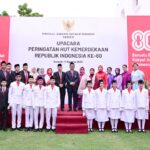More than 610,000 visitors flocked to the
park during the eight-day holiday
with a record 100,000 visitors in a single day
Xinhua

Harbin: Harbin Ice-Snow World, China’s premier ice-themed park in Heilongjiang Province, has emerged as a top tourist attraction, drawing record-breaking crowds during the Spring Festival holiday.
More than 610,000 visitors flocked to the park during the eight-day holiday, with a record 100,000 visitors in a single day. Since the start of the season, the park has welcomed over 2.66 million visitors, underscoring China’s growing enthusiasm for winter tourism.

China’s Winter Tourism on the Rise
China’s winter tourism industry is experiencing unprecedented growth, fueled by the upcoming 2025 Asian Winter Games and the lasting impact of the Beijing 2022 Winter Olympics. Experts highlighted this surge in the latest China Economic Roundtable, hosted by Xinhua News Agency.
Ai Yu, a senior official from the General Administration of Sport of China, emphasized how the 2022 Winter Olympics reshaped China’s engagement with winter sports. Enthusiasm for winter activities is spreading beyond traditional cold-weather regions, with indoor and outdoor options now available year-round across the country.
According to Dai Bin, president of the China Tourism Academy, technology and investment are driving this boom, with artificial snow facilities making winter sports accessible even in warmer regions. A recent survey revealed that over 70% of respondents are eager to engage in winter tourism, with 60% planning to increase their spending in the sector. The 2024-2025 winter season is projected to generate 520 million trips and over 630 billion yuan ($87.87 billion) in tourism revenue.

Beyond Tourism: China’s Expanding Winter Economy
China’s winter economy extends beyond tourism, driving significant growth in manufacturing and services. The country now produces a wide range of winter sports equipment, from personal gear to high-end snowmaking machines. In 2023, winter equipment sales reached approximately 22 billion yuan.
Peng Fuwei, a senior official at the National Development and Reform Commission, highlighted the industry’s “dual-engine” structure, where both manufacturing and services are thriving. Event hosting, accommodation, catering, and winter sports training are all benefiting from the surge in demand.
Harbin has also become a hub for technological advancements in the winter industry. The city has introduced multi-robot ice sculpting and extreme cold automotive testing facilities. “Robotics have made ice sculpture production faster and more efficient,” said Qi Bin, deputy director of Heilongjiang’s culture and tourism department.

China’s Vision for a Thriving Winter Economy
China aims to further expand its ice and snow economy, targeting a market size of 1.2 trillion yuan by 2027 and 1.5 trillion yuan by 2030, according to the latest government guidelines. Key regions such as Heilongjiang and Xinjiang will receive dedicated support to develop into world-class winter sports destinations.
To sustain momentum, the government is integrating winter sports into national development plans, with funding and infrastructure investments supporting the industry’s growth. Expanding the winter industry’s value chain is a priority, with efforts focused on enhancing winter tourism experiences, developing high-tech winter equipment, and creating new travel routes.
The Chinese public’s embrace of winter activities marks a cultural shift. “Winter is no longer a time of dormancy but a season of adventure and exploration,” said Dai Bin. As China continues to invest in its winter economy, ice and snow tourism is set to become a key driver of economic growth, offering year-round opportunities for both domestic and international visitors.






















